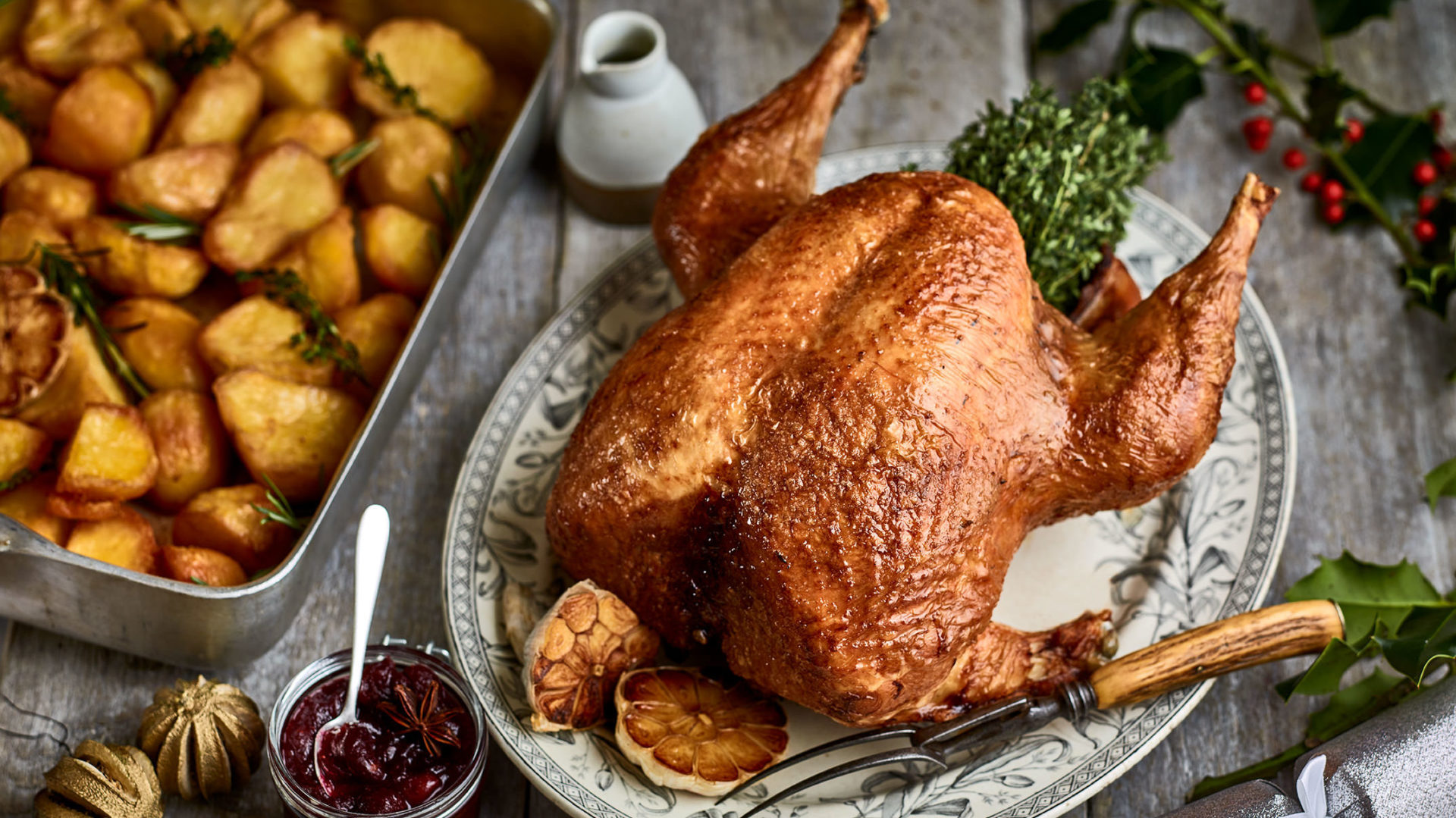
Guaranteed to impress at the Christmas table
You may be a little concerned about the cooking time (or lack of it). Believe me, it has been tried, tested and tried again. During the cooking process, the turkey will absorb the heat from the oven and this absorbed heat will continue to cook the bird while it rests. This can increase the internal temperature by up to 10C. Resting the turkey is an important process which allows the meat to become tender and succulent as the juices inside the meat become more evenly distributed throughout the bird. Once finished with the turkey pick the meat off the carcass, mix it with some mashed potato, parsley and puréed garlic. Allow to firm up in the fridge and shape into cylinders then dip in flour, then egg and then bread crumbs. These can be deep-fried or pan-fried and finished in the oven and you have some wonderful turkey croquettes. Make a delicious and nourishing soup by simmering the turkey bones and carcass with water for 45 minutes.